Ancistrus super ed: description, content and breeding

The red catfish ancistrus is one of the favorite fish of aquarists. This is due to the fact that any aquarium catfish is not just a decorative creation, but also a living filter that is of great benefit to the aquarium and its inhabitants. And if this is a deep red catfish, then it also becomes the main decoration of a home reservoir. In order for the ancistrus to please the owner for a long time, it is important to observe simple conditions of care and maintenance.
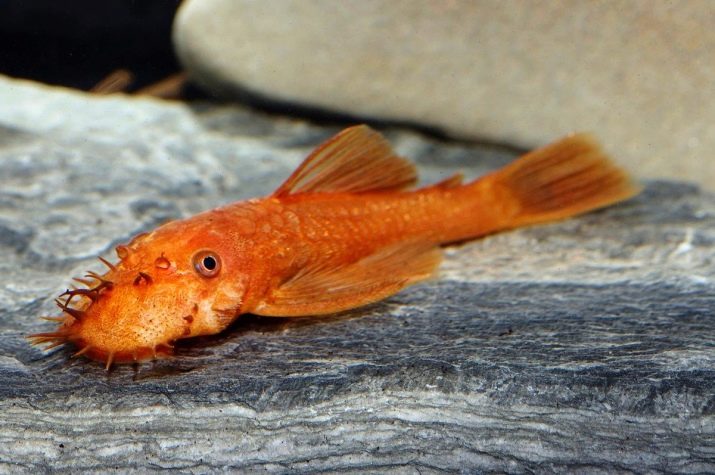
Description
Freshwater reservoirs of South America are considered the birthplace of ancistrus. The body of the fish is dense, drop-shaped, bony plates are observed on it. These creatures have paired pelvic and pectoral fins, miniature adipose and anal fins, and massive dorsal fin. The mouth of the ancistrus is rounded, with narrow lips and horn-shaped suction cups. This fish scrapes off plaque from the decorations and walls of the aquarium with horny tubercles located at the mouth suction cups. Male and female can be distinguished by the presence of distinct bushy skin processes on the head.
One of the most beautiful red species is the super red veiled ancistrus. It has a bright orange or scarlet body color and fins translucent with an orange tint. The size of ancistrus super red - compact, only 3-6 cm.
The fins on the abdominal and chest parts have an unusual shape - they are thinner and wider, resembling a veil in shape. The only drawback in keeping this species is that aquarists emphasize its high price: this aesthetic type of fish is really expensive.
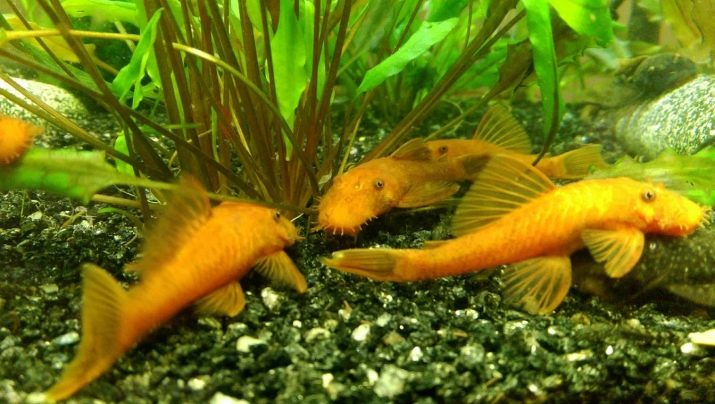
Care and maintenance
Red ancistrus adapt well to various conditions of detention, for example, they are not particularly demanding on water temperature.They also quickly get used to the composition of the water, but in nature they prefer to settle in slightly acidic and soft oxygen-enriched reservoirs. The most suitable temperature range is 20-25 degrees, acidity - 6.5-7.5 pH, hardness - 20-25... To bring the water as close as possible to the natural environment for the catfish, equip the aquarium with aeration systems so that oxygen enters the artificial reservoir.
Daylight hours are divided into day and night phases, since catfish are active at dusk. A period of twilight light with an interval of 30-40 minutes should be created between the two phases. Ancistrus feel comfortable in the shade, therefore vegetation must be abundantly planted in the tank, a grotto, stones, driftwood and other decorations must be placed, which will serve as a shelter for the pet.

Ancistrus super red love to feast on both live and plant food, but the latter is preferred. Their diet may include soft algae covering the walls of the aquarium. Catfish will not refuse from fragments of food that other inhabitants of the aquarium have not eaten. If the owner noticed that the ancistrus is leaning on the aquarium vegetation and gradually destroying it, it can be assumed that the pet is lacking in fiber.
To avoid a deficiency of this component, it is recommended to feed the ancistrus with ready-made special food based on vegetation. Also feed the fish with cabbage and lettuce leaves, nettle, dandelion.
Often these pets kept at home are prone to illness. For example, with illiterate care, abdominal distention can occur. Such a phenomenon can be provoked by poisoning with chemistry, which is contained in poorly prepared water, poor-quality animal feed, gases trapped in the stomach. Sometimes catfish are infected with infections or parasites, this can happen with poor processing of aquarium paraphernalia.
Usually the volume of an aquarium for ancistrus is selected at the rate of 200 liters for two individuals. Experienced breeders do not recommend keeping multiple males together. Under the right conditions, the super red aquarium catfish will live 5-6 years.
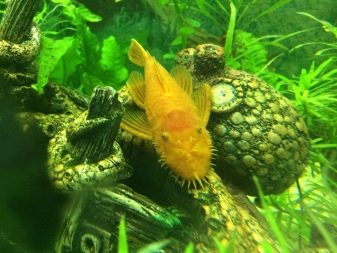

Compatibility
Minors, tetras, thorns, neons, guppies, mollies, platies, swordtails can become good neighbors for ancistrus. A good union will turn out in a catfish with cockerels, gourami, barbs, danios, cardinals, some other catfish, for example, golden or speckled. It is not recommended to add aggressive large fish such as territorial cichlids or plecostomuses to ancistrus.
It is also best to avoid the vicinity of inhibited, scattered aquarium inhabitants, such as goldfish. Conflicts will also arise when keeping ancistrus with scaleless fish, since these species can injure fragile catfish.
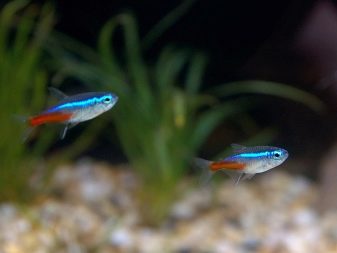
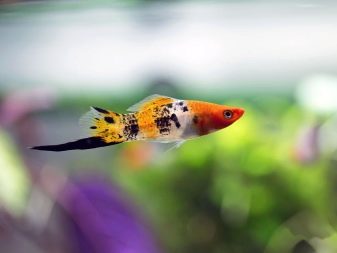
Reproduction
When crossing super red catfish, only breeders of the same species should be used. This variety should not be "brought together" with other ancistrus, otherwise the cubs will turn out to be ugly and will resemble ordinary outbred catfish that are not of aquarium value. Therefore, it is important to strictly observe the breed line.
The female and male individuals are settled in a spawning grounds, they begin to feed abundantly with protein animal food, increase the temperature of the water, and carefully maintain the cleanliness of the artificial reservoir. The male prepares the nest for laying. He looks for a suitable area and cleans it with his suction cup. The female swims into a ready-made nest, where it lays about 30-100 yellow or orange eggs. Further, the male protects his offspring, he is in a state of hunger and stress, and sometimes he can even kill the female or eat the clutch. To prevent this from happening, some breeders drop the parents off after spawning.
On about the 5th day, fry hatch. If the parents are not planted, then the male continues to guard them until they swim on their own - usually this happens after 1-2 days.
Spirulina tablets can be the starting food for the young, and chopped vegetables are gradually introduced into the diet: cabbage, cucumbers, lettuce, and raw potatoes. The menu should contain cellulose, its source may be bottom driftwood, which the growing baby will gnaw.
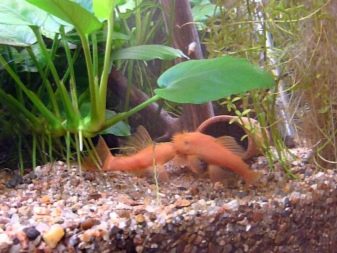
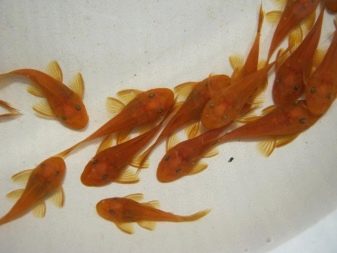
You can look at ancistrus super red further.








